

Scapa Flow, one of the popular diving destinations in the world, is a natural harbour located off the coast of Scotland, United Kingdom.
Known for its archaeological significance, Scapa Flow holds a unique place in maritime history as it preserves many fascinating war stories underneath.
Derived from the Old Norse Skalpaflói, which means ‘bay of the long isthmus’, Scapa Flow refers to the thin strip of land between Scapa Bay and the town of Kirkwall.
During World War I and World War II, due to its strategic location, the Admiralty used Scapa Flow as its principal naval anchorage.
Thus, the water of Scapa Flow is now a historic wreck site as it has played a significant role in both world wars, which also remains as a unique underwater environment with its rich wildlife.
Read further to know about some of the most amazing Scapa Flow facts.
This historic body of water, which features about 120 square miles in area and an average depth of 30 to 40 meters with a shallow sandy bottom, is located in the Orkney Islands, Scotland.
Scapa Flow is enclosed within surrounding islands, namely Hoy, Burray, Graemsay and South Ronaldsay. Being a key harbour since Viking times, the sheltered waters have played a significant role in the region’s trade and travel and conflicts that occurred since prehistory.
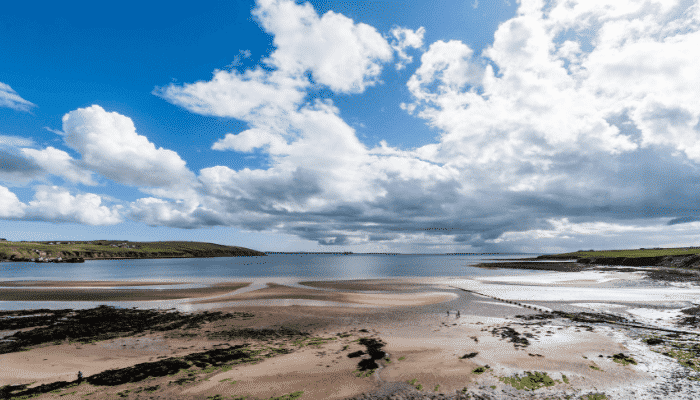

Due to its strategic location, Scapa Flow acted as the naval base of the Royal Navy, carrying out a key role in both world wars.
In addition, this body of water off the U.K. is one of the transfer and processing points for North Sea oil. With the help of an underwater pipeline, the oil is being carried from the Piper oilfield to the Flotta oil terminal.
Historians suggest that Scapa Flow played its part in the battle of the Three Kingdoms when the Royalist general James Graham moored his ship in the sheltered water in 1650 while he was in an effort to raise a rebellion in Scotland.
Meanwhile, some say that Admiralty first took an interest in the water body during the Napoleonic wars of the early 1800s. The sheltered water was then used as a deep water anchorage for trading ships before crossing the North Sea to Baltic ports.
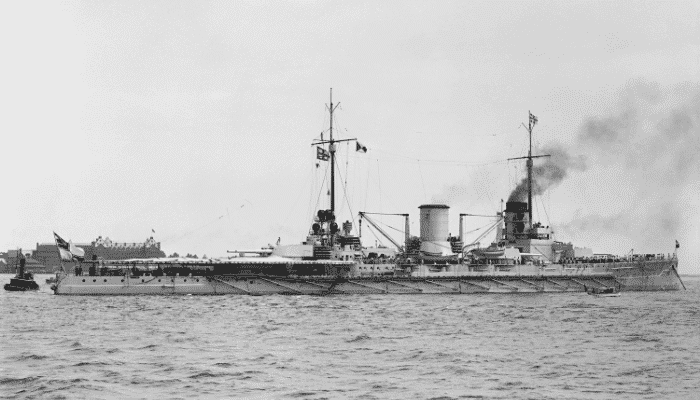

However, the benefit of its strategic location was mostly exploited during World War I and World War II. Its position made it guarded against all sides and provided the British army with huge leverage against its enemies.
During WW I, this harbour was mainly used as an exercise spot initially but later turned into a full-scale northern base due to the absence of any suitable spot that could be used at short notice and also because Scapa Flow seemed a viable option.
As such, during WWII, it was readily selected as one of the most important northern bases.
Immediately after the end of WW-I, about 74 German ships from the High Seas Fleet were destined to be interned at the Royal Navy harbour at Scapa Flow while negotiations were taking place over the final decision on the fate of the ships.
Both parties, as part of the Armistice agreement, discussed a seemingly neutral point for the interning. While a final destination was never mentioned in the Armistice, Scapa Flow was the site mentioned by the British Navy for the suggested interning.
The captured fleet of ships was docked close to the spot for over nine months while the details of the treaty regarding its interning were being worked out.
While Britain and the U.S. reportedly suggested the destruction of the vessels, the French and Italians were pushing for sharing the ships.
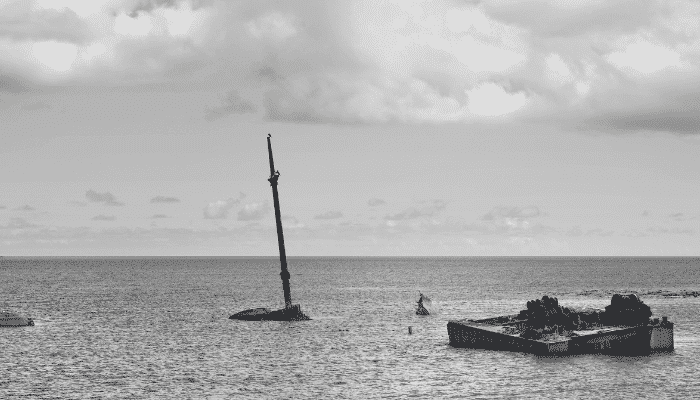

As the decision was pending, the fleet was opened to the public. Meanwhile, after having spent so much time waiting for suitable orders, the German commander, Admiral Ludwig von Reuter, gave orders for the scuttling of the German ships on 21 June 1919 in Scapa Flow.
As a total of 52 ships sank in front of many spectators, marking the greatest loss of shipping ever recorded in a single incident, the timely intervention of British guard ships helped save a number of warships.
Official documents say that many wrecks were later salvaged and were towed away for scrapping, but still leaving many on the seafloor of Scapa Flow.
Admiral Ludwig von Reuter and many other chief officers were captured on the grounds of the destruction of British property but later released.
During WWI, the Royal Navy had placed strong defence throughout Scapa Flow in a bid to protect the base from attacks. Several measures, including the deliberate sinking of block ships, were taken to prevent Germany from accessing the Scapa Flow.
However, during WWII, a German submarine penetrated the Scapa Flow and caused the British ships to fall back.
The Royal Navy battleship HMS Royal Oak was sunk at her moorings on 14 October 1939 after an attack by the German U-boat U-47, killing a total of 834 men.
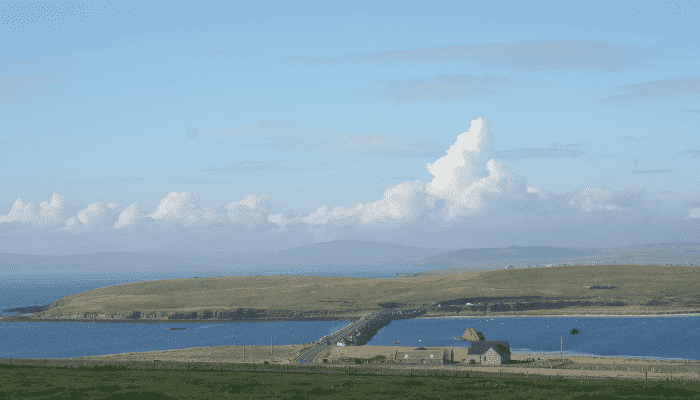

In response to the infamous naval disaster that occurred in Scapa Flow, then-British Prime Minister Winston Churchill ordered the sealing of ways that could make another similar break-in possible.
As a result, huge amounts of concrete blocks were placed between islands to make causeways. These causeways linking South Ronaldsay to the Mainland are now called the Churchill Barriers.
With a total length of 2.4 km, the causeways now connect the Orkney Mainland to the island of South Ronaldsay and the two smaller islands of Lamb Holm and Glimps Holm.
With the scuttling of 52 German ships and also a few other ships in the past, Scapa Flow consists of a world-class shipwreck resource, making it one of the world’s largest maritime museums.
A lot of the scrap metal from the sunken ships in Scapa Flow was removed following the cleaning operation known as the ‘great Salvage operation.’ But, despite that operation, a lot of wartime heritage still can be found in its bed.
Apart from the seven remaining wrecks of the German High Seas Fleet, Scapa Flow has the British battleships sank in its waters, such as H.M.S. Royal Oak and H.M.S. Vanguard.
After taking their historical and cultural importance into consideration, the wrecks have been protected as scheduled monuments.
On the other hand, the Scapa Flow Visitor Centre and Museum, located at Lyness on the island of Hoy, illustrates the significance of Scapa Flow, especially its involvement in World War 1 and World War 2.
The museum, based in wartime naval buildings, tells the story of Scapa Flow, using pictures, three-dimensional representation of the island and of the sunken ships, films, and an audio exhibition along with a collection of large military vehicles.
Opened in 1915, Lyness Royal Naval Cemetery, located on Hoy Island, is the final burial place of many Royal Army members who lost their lives during both world wars. The 600 soldiers laid to rest here include Empire and Commonwealth service personnel, mostly sailors.
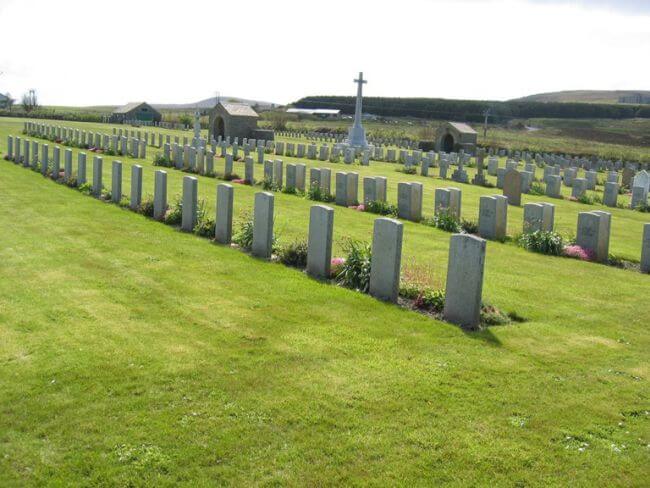

According to war documents, more than 440 Commonwealth servicemen buried here were from the First World War, of which 107 remain unidentified.
And around 200 soldiers were buried during Second World War, including 26 men from H.M.S. “Royal Oak”, which was sunk by a German U-boat.
In addition, there are also the graves of 13 sailors of the German High Seas Fleet. The Lyness Royal Naval Cemetery was closed in 1946 as the navy started shifting its operations from Orkney.
Currently, Scapa Flow is considered one of the most visited tourist sites in the world. Having a rich wreck resource underneath, Scapa Flow is home to a wide variety of wild aquatic lives, attracting visitors from across the world.
In addition, the body of water features a living account of the two World Wars and the natural beauty of many islands nearby.
The highlights include diving options to visit the bed of this harbour and explore the remains of battleships, the Italian Chapel constructed by Italian prisoners, the Stromness Museum and the work of artists.
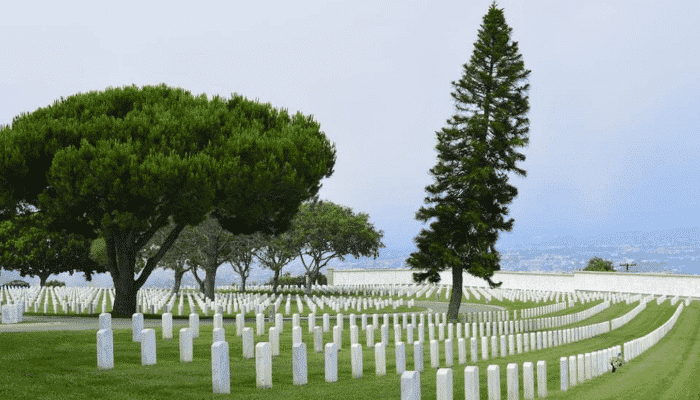

Since the wrecks have become rich artificial reefs, Scapa Flow now qualifies as one of the top diving destinations in the world, becoming a popular venue for recreational scuba divers.
Since ships lie at the base and weigh as much as 25000 tons, the divers have the opportunity to explore the seafloor. Remains of ships like the Cruiser, Dresden, Brummer, Koln, Konig, Kronprinz Wilhelm and Markgraf can be explored through these diving expeditions along with the rich marine fauna growing on them.
Currently, there are many dive boats operating in the Scapa Flow area, helping divers across the world to help explore the maritime history of the water body.
However, sometimes the wrecks of Scapa Flow also make changes to the weather conditions according to the seasons, creating discomfort for divers at times.
The temperature gets warm during the spring as well as in the early autumn in Scapa Flow, triggering an algal bloom, which reduces visibility in the water.
Scapa Flow is the ideal destination for watching birds, as the region is home to an array of rare bird species. The waters around Scapa Flow are abundant with puffins, razorbills, fulmars, guillemots and kittiwakes. These birds are visible on cliffs and rocks and can be seen diving into the waters to catch small fish.
Birds like ducks, geese, swans, and wading bird species like lapwings, curlews and redshanks live in the wetlands and marshes around Scapa Flow. These regions are important since several birds come here to breed, nest and rear their young ones.
The Nature Reserves in the Orkney Islands are perfect for lovers of birds. Also, many tour companies offer bird-watching trips led by knowledgeable guides who can help one spot and identify all the bird species while offering insights into their habitats and behaviour.
The oil sector has played a crucial role in developing the economy of Scapa Flow and the neighbouring area. The Flotta Oil terminal is a key crude oil and gas processing, storage and export terminal on Flotta Island, in the southern part of Scapa Flow, in the Orkney Islands.
It receives and then processes the crude oil that comes through an underwater pipeline from Piper, Tartan, Claymore, Golden Eagle platforms and other related fields. It has facilities for handling supplies and equipment for offshore oil rigs.
The terminal was constructed in the 1970s to serve the Brent oil field in the North Sea. It is operated by Repsol Sinopec Resources U.K. and handles around 500,000 barrels of oil each day. It has facilities to process and store natural gas.
Tankers laden with oil and gas leave the terminal for countries in Asia, Europe and North America. The terminal has provided jobs to many residents of the neighbouring islands.
Tales about the Scapa Flow Curse have been passed down through generations of sailors and inhabitants of Orkney Islands. Per the legend, a witch placed a curse on Scapa Flow waters.
According to the story, a young woman in Orkney Island was accused of being a witch and was subjected to a trial by water. If she sank, she would be innocent, and if she floated, she would be guilty.
The woman tied to the chair was thrown into the waters of Scapa Flow, and she floated, which led to her execution. The woman’s sister placed a curse on the scapa flow as she was saddened by her mistreatment and wrongful death.
The curse is said to bring bad luck to those who cross the waters of the Scapa Flow. The legend gained popularity during WWI when the British Navy battleship HMS Vanguard exploded in the harbour in 1917, killing more than 800 sailors. There were other accidents of ships running aground, collisions etc.
The legend continues to fascinate travellers and adds to the region’s rich cultural beliefs, folklore and history.
Scapa Flow’s history goes back to the times of the Vikings. The Orkney islands were settled by the Vikings in the 8th-9th centuries and soon became a centre of Norse trade and culture. Orkeneyinga Saga, a famous Viking text, records the history of the islands and the Norse Earls who controlled the region. The text mentions Scapa Flow as a strategic centre for trade and commerce.
In one of the sagas, it is mentioned that the Viking Eark Sigurd built a huge fleet of ships in the 9th century in the Scapa Flow waters to raid the Scottish mainland. He is described as having a powerful character, and his achievements are celebrated in many Viking texts.
Heimskringla is another medieval Viking text which records the tales of Norwegian kings. The text mentions a war that took place in Scapa Flow in the latter half of 11 century in which King Magnus Barefoot defeated the Scottish fleet and gained control over the region.
Waters around Scapa Flow are abundant with seaweed and are home to many seaweed processing companies that produce a range of products that are sold both locally and internationally.
The seaweed industry is a major part of the economy of the Orkney Islands, of which Scapa Flow is a part. The seaweed has been harvested from the waters surrounding the islands for centuries, and today also, it is a crucial income source for some locals.
Seaweed has many uses in the food industry, cosmetics, pharmaceuticals etc. It is enjoyed with sushi, soups, and salads and is also used as a thickener and a flavouring agent. It is also used in lotions, soaps and creams since it moisturises the skin and has anti-inflammatory properties. It is being studied for its potential to treat cancer, obesity and diabetes.
The seaweed industry of Scapa Flow is sustainable and adheres to strict regulations, so harvesting does not put a strain on the marine ecosystem.
Peat is a fuel formed from the accumulation of organic matter in wetlands over thousands of years. In Orkney islands, it is mainly found in bog and moorland. It has been used as a fuel source for locals and those living in remote parts of the islands. It is cut by hand through traditional methods and is dried before it can be used.
It is also utilised in horticulture for growing plants like blueberries and rhododendrons. Though peat is a traditionally used fuel source in the Orkney Islands, there is an increasing concern over peat extraction. It leads to habitat loss and threatens ecosystems. Hence, there is a need to explore alternative fuel options in the Orkney Islands.
The waters of the Scapa Flow are rich in fish that are commercially viable. Some popular species include haddock, cod and salmon, which makes this region a key location for fishing.
In the past few years, fishing in the scapa flow waters was mainly carried out using small ships using traditional methods of fishing like thrilling and line fishing. However, in present times the Scapa Flow fishing industry has become more mechanised, evidenced by the presence of large fishing vessels using advanced fishing technologies.
The fishing industry in the region also provides employment opportunities and income to many. It also supports many businesses, such as fish processing plans and export companies dealing with seafood.
Lastly, the importance of fishing is highlighted in the many local festivals and events centred around fishing. Seafood is a staple of the people in the region.
The area is home to diverse habitats, including kelp forests, meadows of seagrass, rocky reefs, and sandy seabeds that provide shelter to many marine creatures.
Some common plant species in the Scapa Flow are kelp, dulse, wrack etc. There is also eelgrass, a kind of seagrass. These plants are habitats for small fish, crustaceans and shellfish.
Apart from fish, invertebrates like crabs, lobsters, shellfish, scallops and mussels are also found.
To conclude, the Scapa Flow is a fascinating place that has played a crucial role in history, both during times of war and in peacetime. From the scuttling of the German fleet to the wrecks of many ships that sank there and its stunning natural beauty and richness of marine life, Scapa Flow has something for everyone.
It is perfect for history enthusiasts, nature lovers and adventure seekers alike since it offers a unique and memorable experience. It is also ideal for divers and travellers seeking rest and comfort from the hustle and bustle of their everyday lives.
So whether one plans to dive the wrecks or explore the nearby islands or simply enjoy the breathtaking views, Scapa Flow is a place which can be on your bucket list.
You might also like to read:
Disclaimer: The authors’ views expressed in this article do not necessarily reflect the views of The Marine Learners. Data and charts, if used, in the article have been sourced from available information and have not been authenticated by any statutory authority. The author and The Marine Learners do not claim it to be accurate nor accept any responsibility for the same. The views constitute only the opinions and do not constitute any guidelines or recommendation on any course of action to be followed by the reader.
The article or images cannot be reproduced, copied, shared or used in any form without the permission of the author and The Marine Learners.










We believe that knowledge is power, and we’re committed to empowering our readers with the information and resources they need to succeed in the merchant navy industry.
Whether you’re looking for advice on career planning, news and analysis, or just want to connect with other aspiring merchant navy applicants, The Marine Learners is the place to be.